Retro Replay Review
Gameplay
Dream TV centers around a clever dual-character system that keeps every level feeling fresh. Although it’s designed as a two-player action/adventure, the single-player experience remains robust: you switch control between two kids on the fly or opt for a split-screen layout to see both at once. This flexibility means you can tailor the view to your playstyle—full-screen for focused platforming or split-screen when you need to monitor both kids during simultaneous puzzles.
(HEY YOU!! We hope you enjoy! We try not to run ads. So basically, this is a very expensive hobby running this site. Please consider joining us for updates, forums, and more. Network w/ us to make some cash or friends while retro gaming, and you can win some free retro games for posting. Okay, carry on 👍)
The game’s core loop revolves around exploring themed worlds—Medieval, Egyptian, Prehistoric, and Futuristic—solving environmental puzzles, unlocking doors with collected keys, and hunting down hidden puzzle pieces. In the Medieval World, you’ll dodge skeleton warriors and avoid malicious knights as you root through dungeons for cryptic levers. Later worlds introduce shifting sands, erupting volcanoes, or humming laser grids, each demanding you leverage both kids’ positions and timing to progress.
One of Dream TV’s standout mechanics is cooperative-style obstacles that force you to think in two dimensions at once. Whether bouncing characters on a see-saw to reach a floating platform or coordinating simultaneous button presses to open a massive gate, you’re constantly juggling character positions. While this can occasionally feel cumbersome—especially during tight timing sequences—it infuses the game with a puzzle-platforming charm that single-character titles lack.
Graphics
Visually, Dream TV strikes a delightful balance between colorful whimsy and thematic authenticity. The Medieval levels are drenched in cool greys and torchlit oranges, with stone textures that evoke castle corridors and dank dungeons. When you transition to the Egyptian world, the palette shifts to sunbaked yellows and deep blues as hieroglyph-lined tombs stretch into the horizon.
Character sprites are crisp and expressive, capturing each kid’s personality through subtle idle animations—bobbling hair, shifting stances, or animated reactions to nearby hazards. Environmental details like fluttering banners, drifting sand particles, or pulsing neon in the Futuristic World add dynamic flavor to each stage. On modern hardware, the game runs at a steady framerate with barely a hitch, even when both screens display heavy action.
That said, some environments can feel a bit repetitive after extended play. Reusing dungeon tile sets or re-textured walls across multiple levels can dull the sense of discovery. Minor draw-distance pop-ins appear in the more expansive Outdoor zones, but these rarely distract from the overall visual experience. For the most part, Dream TV maintains a consistent and engaging art direction throughout its diverse worlds.
Story
At its heart, Dream TV spins a simple yet effective yarn: two curious kids find themselves enlisted by a mystical television set that transports them into a series of dreamlike worlds. Each realm pulses with its own lore and challenges, all tied together by the ultimate goal of collecting scattered puzzle pieces. Once assembled, these pieces promise to free the children from the TV’s magical grip.
The narrative unfolds mostly through brief cutscenes and on-screen text. You’ll learn about the TV’s enigmatic origins and how it draws power from each realm’s core artifact. While not overly ambitious in its storytelling, Dream TV uses environmental cues—like ancient murals in the Egyptian world or tech-industrial consoles in the Futuristic zone—to hint at a larger backstory without bogging down the gameplay.
Character development is light but charming. The siblings banter through text bubbles, trading playful jabs and encouraging each other when one gets stuck. Their dynamic lends the journey emotional warmth, even if the plot rarely takes unexpected turns. For players seeking a deep narrative, Dream TV might feel a tad sparse, but for those craving a straightforward adventure, the story serves its purpose well.
Overall Experience
Dream TV delivers a unique twist on the action/adventure formula by making you manage two characters simultaneously. This dual-control mechanic elevates standard platforming and puzzle challenges, providing a satisfying blend of cooperation and coordination. Switch between kids or engage split-screen mode—it all adds up to a gameplay loop that remains engaging from start to finish.
However, the requirement to juggle two avatars can sometimes lead to frustration, particularly in higher-difficulty sections where timing is critical. The absence of true two-player local co-op feels like a missed opportunity, forcing solo players to shoulder all the puzzle-solving burden. Still, the variety of world themes and the steady flow of new obstacles help counteract occasional monotony.
Ultimately, Dream TV shines for fans of puzzle-platformers who appreciate clever level design and vibrant settings. Its lighthearted story and charming visuals make it a solid pick for casual gamers or families looking for an imaginative adventure. If you’re prepared to embrace the dual-character challenge and can forgive the occasional repetitious backdrop, Dream TV offers a thoroughly enjoyable ride through four fantastical worlds.
 Retro Replay Retro Replay gaming reviews, news, emulation, geek stuff and more!
Retro Replay Retro Replay gaming reviews, news, emulation, geek stuff and more!
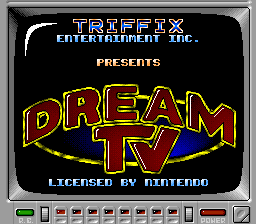
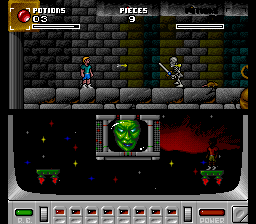
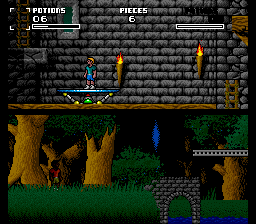
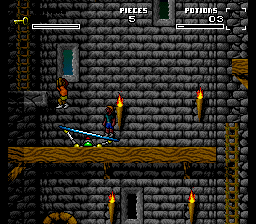
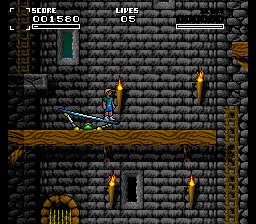



Reviews
There are no reviews yet.